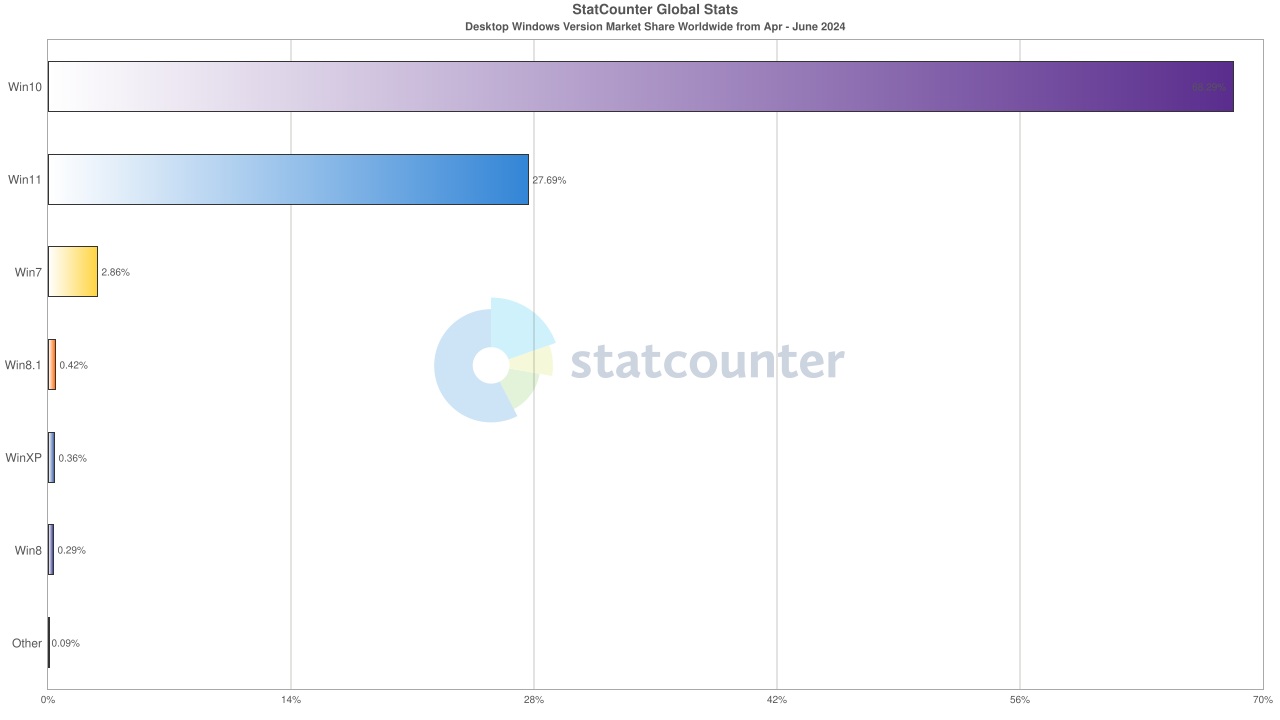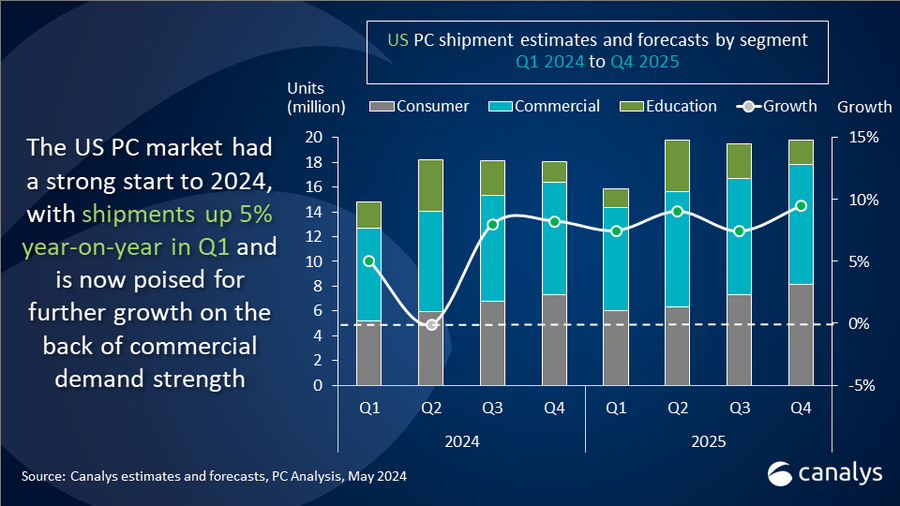Windows 11 and 10 jointly capture nearly 96% of the Windows desktop market share. While Windows 10’s popularity hasn’t dwindled much despite the availability of a new OS, Windows 11’s user base is slowly rising.
Initially, when Windows 11 launched in October 2021, Windows 10 enjoyed a staggering 81.44% market share. Fast forward to June 2024, Windows 10’s market share dipped below the 70% mark, while Windows 11 climbed to almost 30%.
Windows Latest analyzed the last three months’ stats (April-June 2024) from Statcounter and noticed the following:
- After a consistent three-month growth to 69.89% in April 2024, Windows 10’s market share witnessed a 1.55% decline in May 2024. The stats dipped further by 2.14% in June 2024, when the user base dropped to 66.2%. It is an all-time low for the most dominant Windows OS.
- Windows 11 experienced consistent growth from April 2024 onwards, when the hype around Copilot+ PC started to build. In May 2024, its market share grew by 1.48%, while in June 2024 it grew by 1.96%. The final percentage count as of June 2024 stands at 29.63%, a personal best of Windows 11.
If the current trend continues, Windows 11 might reach the 30% and above market share.

PC and Tablet shipments are increasing
“US PC shipments will grow by 5% in 2024 and a further 8% in 2025.” a Canalys report reveals.
The PC market shipments witnessed promising growth in the first quarter of 2024, with 14.8 million shipments. Canalys projections indicate nearly 69 million PC shipments to the US in 2024.

Windows 10’s End of Support announcement is a major contributor to this growth. Both consumer and Small-medium Business (SMB) segments are heavily investing because the old-gen Windows 10 PCs are incompatible with Windows 11.
The PC shipment rate will aggressively increase in the upcoming months. Tablets won’t receive the same growth, but their shipments are also expected to grow by 2.5% this year.
Fate of Windows 10
Windows 10 will have a decade-old run by 2025 and will reach the End of Support on October 14, 2025. Its successor demands UEFI, TPM 2.0, SecureBoot, and more storage and RAM to function. Some hardware upgrades are impossible, especially on portable PCs and specific-use-case devices (kiosks), so buying a Windows 11 PC is the only solution.
Businesses cannot stick to Windows 10 for much longer after the EOS date because that would be a security nightmare. Even consumer edition users shouldn’t cling to an unprotected OS for obvious reasons.
Microsoft has plans to extend Windows 10’s support for a few more years, but the plans for Business editions are quite expensive. We expect the exact exorbitant pricing for the consumer edition’s Extended Security Updates (ESU) program.
The extended support only keeps you secure and doesn’t roll out any new features, that you currently get with each monthly update for Windows 10 22H2.
The post Windows 11 isn’t losing market share to Windows 10 as it gains more users appeared first on Windows Latest
